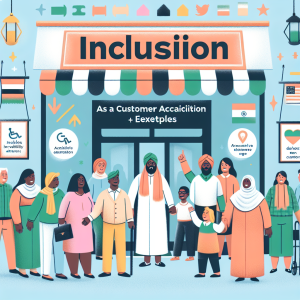In the digital age, your website is often the first interaction potential customers have with your business. A well-designed website builds trust and converts visitors into loyal customers. Conversely, a bad website design can have disastrous effects, damaging your credibility, losing customers, and lowering your SEO rankings. This article delves into the negative impacts of poor web design and provides actionable tips for improvement.
Identifying a Bad Website Design
Before addressing the effects, it’s crucial to identify what constitutes a bad website design. Here are some common characteristics:
- Lack of Mobile-Friendliness: In a mobile-first world, having a website that isn’t responsive can alienate a significant portion of your audience.
- Poor Navigation: Users should be able to find what they need with ease. Complex or confusing navigation frustrates users and drives them away.
- Inconsistent Branding: Your website should reflect a cohesive brand identity. Inconsistent use of colors, fonts, and imagery can confuse visitors and dilute your brand message.
- Cluttered Layout: A cluttered website with too much information can overwhelm visitors. Aim for a clean, organized layout with plenty of white space.
- Broken Links: Broken links are not only frustrating for users but also detrimental to your SEO. Regularly check and fix any broken links.
- Excessive Pop-Ups: While pop-ups can be effective, overusing them can annoy visitors and cause them to leave your site.
- Slow Loading Speeds: In today’s fast-paced world, a slow website is a sure way to lose visitors. Optimize your site for speed to improve user experience and SEO.
Negative Effects of Bad Website Design
Reduces Your Credibility
A poorly designed website can make your business appear unprofessional. Visitors form an opinion about your business within seconds, and a bad design can lead them to believe your services or products are of low quality. To build credibility, ensure your website is visually appealing and user-friendly.
Wastes Your Money
Investing in marketing to drive traffic to your site is futile if visitors are greeted by a subpar design. A bad website can negate your marketing efforts, leading to a poor return on investment. Prioritize good design to make the most of your marketing budget.
Causes the Loss of Potential Customers
User experience is paramount. If your website is difficult to navigate, cluttered, or slow, visitors will quickly leave and likely never return. This loss of potential customers can significantly impact your revenue. Focus on creating a seamless, enjoyable experience to keep visitors engaged and convert them into customers.
Affects Your SEO Rankings
Search engines favor well-designed websites. Factors such as mobile-friendliness, fast loading speeds, and a clean layout contribute to better SEO rankings. A poorly designed site can lower your rankings, making it harder for potential customers to find you. Optimize your design to meet search engine guidelines and improve your visibility.
How to Improve Your Website Design
To avoid these negative effects, consider the following tips:
- Invest in Responsive Design: Ensure your website looks great on all devices, from desktops to smartphones.
- Simplify Navigation: Make it easy for users to find what they’re looking for with a clear and intuitive menu.
- Maintain Consistent Branding: Use consistent colors, fonts, and imagery to reinforce your brand identity.
- Declutter Your Layout: Embrace white space and organize content logically to avoid overwhelming visitors.
- Regularly Check for Broken Links: Use tools to identify and fix broken links to maintain a smooth user experience.
- Use Pop-Ups Sparingly: Limit the use of pop-ups to essential information to avoid annoying your visitors.
- Optimize for Speed: Compress images, use a content delivery network (CDN), and minimize code to improve loading times.
Conclusion
Improving your website design is essential for enhancing user experience, building credibility, and boosting your business’s success. Regularly update and optimize your website to stay competitive and meet consumer expectations. A good design not only attracts visitors but also helps convert them into loyal customers, driving your business forward.
By focusing on these key aspects, you can avoid the pitfalls of bad website design and ensure your online presence supports your business goals.
In:








